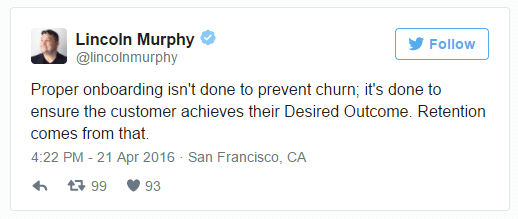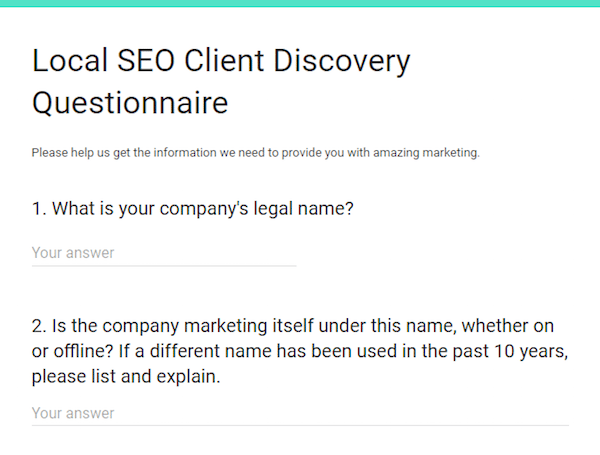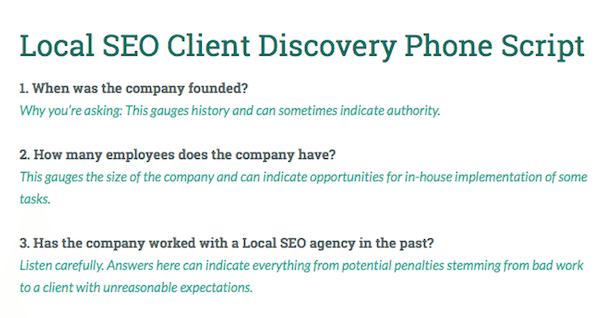After countless emails, phone calls, and meetings, you’ve landed your new client. The contract is signed, and you’ve sealed the deal.
But now what?
How do you make sure your client is setup for long-term success?
The key is to acknowledge that the sales process is only half of the equation. Building a strong client-agency relationship with your client is what really matters because how they feel at the start of this journey will set the tone for your future together.
To ensure a smooth kick-off — and to make sure you don’t lose business before the relationship even starts — your agency must have a client onboarding process in place.
What is client onboarding?
Client onboarding is the process of introducing and welcoming new clients to your company — the initial step on their journey with your agency. It includes addressing any questions and concerns your client may have, ensuring that you’re both on the same page, and making sure your client feels confident in your ability to achieve their desired outcome. This helps establish complete client satisfaction and will increase your chances of retaining them as a customer.
Lincoln Murphy sums it up perfectly:

Jennifer Bourn of Bourn Creative, refers to client onboarding as a professional term for the process of “getting started.” She describes it as the process in which the client gains the knowledge, understanding, and tools necessary to be a successful client; and the agency gains the knowledge, understanding, and tools needed to be an effective service provider.
To make sure all these elements happen — and help the process run as smoothly as possible — we’ve developed a checklist of 7 best practices to consider when developing your client onboarding plan.
7 Client onboarding best practices
1. Start communication immediately
To establish a successful kick-off, immediate communication with the client is critical. Even if the work hasn’t officially started yet, find small reasons, any reasons, to communicate with them. Losing contact with the client early on might mean losing the client completely.
Social media is a great way to start nurturing the business relationship. Find out what social networks your client utilizes most often and engage with them on that platform. Comment on one of their Facebook posts, retweet them, or share one of their recent blog posts on LinkedIn. Not only does this keep you in communication, but it also shows that you know how to leverage social media to build relationships. This is especially important if you’ll be focusing on social media work for the client.
2. Collect all necessary data
It may seem obvious, but one of the most important things you’ll want to do is collect necessary data from your client. Without this information, you can’t possibly do your job.
To help a client meet their goals, you must know where it currently stands.
- What’s working well and what areas are they struggling?
- Where is the majority of their website traffic coming from?
- What’s the typical buyer persona?
An ideal way to obtain this information is with a questionnaire or briefing document. Here’s an example that Moz uses:

You can also create a phone call script or a list of meeting questions like this one:

No matter what method you choose, the important thing is to have a reliable resource (a hard copy of the resource, not just mental lists) to use every time a new client signs on with your agency.
In addition to information on the current status of your client, you’ll also need the login details for the software you’ll be using, like Google Analytics, Twitter ads, Optimizely, etc. On top of that, you’ll have to be granted access to any relevant documents or spreadsheets necessary to complete your work (e.g. buyer persona documents in Google Docs, or user testing video notes in Google Sheets).
All of this information should be shared immediately after signing so that it’s out of the way early on and doesn’t cause any friction later on. You’ll want to make sure all this paperwork is shareable. Your team will need to collaborate on these completed documents, questionnaires, and phone interview transcripts so make them centrally available right from the start.
3. Clarify expectations
To succeed at reaching your client’s goals, you must first define what those goals are. What exactly are they looking for? What is their end goal? What is their definition of success?
Requests for “increased website traffic,” “more engaging social media,” or “better conversion rates” are too vague. Your client’s goals must be clearly articulated and translated into specific, measurable goals: “Increase traffic by X%” or “X% conversion rate.”
In addition to knowing what your client is looking for in terms of final outcomes, you must also clarify mid-journey expectations — details like timing, milestones, etc.
To achieve success, everyone must be involved in the goal-setting process, expectations must be realistic, and everyone needs to remain on the same page throughout the entire journey.
4. Brief the rest of the team
Onboarding isn’t just for the client. Since success requires teamwork, successful client-agency relationships must incorporate an element of team onboarding.
Educate your entire marketing team; brief them on the new client. Be sure they have a clear understanding of the client, the campaign, and the work involved. Ensure every team member understands the client’s objectives, and that everyone knows his or her role and responsibilities in obtaining those objectives. Assign them any necessary reading materials, loop them into your notes, and grant them access to the assessment, contract, and any other important documents they might need.
Once you’ve done all of this, you can have a kickoff call with the client and the entire agency team. This call is crucial because it ensures your client gets a great first impression of your team and sets the stage for retention down the road. It’s also important to ensure everyone is on the same page before moving forward with the work.
5. Prove your value quickly
Since clients are often skeptical about your ability to produce positive results for them, so as a gesture of good faith, it’s a good idea to look for ways to deliver quick wins early on.
For example, making sure your client is driving traffic to dedicated post-click landing pages instead of their homepage is a great way to deliver fast results. Additionally, minimizing the load time of those post-click landing pages can increase traffic by 50%.
Although it’ll likely take some time to meet the client’s end goal, you can certainly find ways like these to gain small successes along the way.
6. Keep communication flowing
Steadily flowing, effective communication is one of the most critical client onboarding best practices. Several components play into this, including:
Setting up a central point of contact
First, contact information for all methods of contact should be exchanged — phone numbers, email addresses, etc. At the same time, though, a preferred communication channel should be agreed upon by everybody. What will be the primary method of communication? Phone, email, Slack, Skype, Google Hangouts? Also, the client should know who their central point of contact is at the agency, and vice versa.
Creating a communication schedule
Setting up a communication schedule is also important for the onboarding process. Consider details like:
- When is your team available for contact?
- When is the client available?
- Are you in the same time zone?
- Will there be a weekly, bi-weekly, or monthly check-in call?
Tallyfy recommends checking in after 30 days to get a sense for how the process is going, to address any issues or concerns that may have arisen, and to confirm that the client is satisfied with your work so far.
Exchanging feedback regularly
Exchanging helpful feedback with the client is another way to keep communication (and effective work) flowing. To provide sufficient feedback to the client, you’ll want to document and review everything you do so that you can offer them a specific, detailed report when necessary.
You’ll also want to listen to clients’ feedback. Ask them questions or provide them with a survey. One way to receive this feedback is by using SmartSheet to collect the data. By hearing what they have to say, you can use that information to improve overall client experience and build the business relationship.
Using the right tools to make communication easy
As technology advances, so do the options for tools to accomplish key marketing objectives.
Let’s take a look at video: When it comes to client onboarding, a video is ideal for things like introductions, tutorials, meetings, updates, etc. Record yourself welcoming the new client and introducing everyone on the team or screen record yourself using various software to show your client how to use it. You can then use media sharing tools, like Monosnap, to share these videos with your clients.
Another recent advance in marketing technology is the creation and utilization of collaboration software to make the process of working as a team more efficient.
For example, Instapage created the first and only post-click landing page collaboration solution that offers integrated collaboration capabilities for marketing teams and agencies. It allows clients and agencies to share and respond to comments, provide feedback to each other, and resolve issues, all right within the platform and in real-time.
7. Focus on the overall relationship
Finally, it’s essential to acknowledge that client onboarding isn’t just about the service you’re providing to the client. It’s about the entire experience of working together as a team to reach a common goal.
Think of it this way: You might accomplish every one of your client’s goals; but if they don’t feel a strong, closely-knit client-agency connection, they might not feel comfortable working with you again in the future.
Although the client retainer fee is satisfying, this can’t be your only concern. Instead, take the time and effort to focus on the overall success of your client, and your business relationship as a whole. They’ll recognize this and, in turn, be more loyal to your agency, which increases your chances of retaining them as a customer.
Get started creating your client onboarding plan
It takes substantial time and energy to bring on new clients, so it is imperative that you do everything possible to keep them onboard with your agency. That’s why it’s critical to have an effective onboarding process in place.
By following this client onboarding checklist, you can ensure that your needs, and the needs of your client, are both being met. Start creating your dedicated post-click pages by signing up for an Instapage Enterprise demo today.
